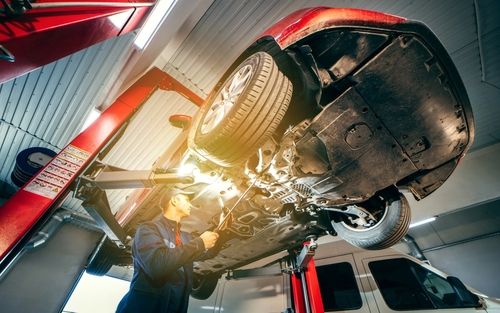Your European vehicle’s chassis and suspension system do more than just keep you comfortable on the road. They are essential components that affect handling, stability, and overall safety. When these systems start to fail, you’ll notice significant issues that can compromise your driving experience and even put you at risk. In this blog, we’ll walk you through the purpose of your European vehicle’s chassis and suspension, the signs of failure, and why it’s crucial to get these problems fixed as soon as possible.
The Role of the Chassis and Suspension System in European Vehicles
The chassis serves as the structural backbone of your European vehicle, supporting all the major components, including the engine, transmission, and suspension. It provides the framework that holds everything together, ensuring the vehicle's integrity and stability while on the road.
The history of the chassis dates back to the early days of automobiles in the late 19th century. The first motor vehicles were built with simple ladder-frame chassis designs, inspired by the structure of horse-drawn carriages. This design was first introduced by Karl Benz in the late 1880s when he developed the Benz Patent-Motorwagen, one of the earliest gasoline-powered automobiles. Over time, chassis technology evolved significantly, with manufacturers moving from traditional body-on-frame designs to modern unibody construction, which integrates the body and chassis into a single unit for improved strength, weight distribution, and safety.
Today’s chassis designs incorporate advanced materials like high-strength steel and aluminum to enhance durability while reducing weight. Additionally, modern chassis include crumple zones and impact-absorbing structures to improve crash safety. Suspension components such as independent front and rear suspension systems, electronic dampers, and adaptive suspension technology have also greatly improved ride comfort, handling, and overall vehicle performance.
A properly functioning suspension system enhances steering stability, braking efficiency, and overall comfort. Components like shocks, struts, control arms, bushings, and springs all work together to keep your vehicle driving smoothly and safely.
Signs Your Chassis or Suspension System is Failing
A failing suspension or chassis can make your European vehicle difficult to control, uncomfortable to drive, and unsafe on the road. Here are some key warning signs that you shouldn’t ignore and some parts and systems you should consider having inspected at EuroNation Auto Specialists:
- Uneven or Excessive Tire Wear – If your tires are wearing out faster on one side, your suspension may not be distributing weight evenly.
- Rough or Bumpy Ride – If you feel every little bump in the road or your car bounces excessively after hitting a pothole, your shocks or struts could be worn out.
- Drifting or Pulling While Driving – If your vehicle drifts to one side, especially while turning, this could indicate a suspension imbalance or alignment issue.
- Nose Diving When Braking – When your suspension is worn, the front of your car may dip dramatically when you hit the brakes.
- Unusual Noises – Clunking, knocking, or creaking sounds while driving over bumps can be signs of loose or damaged suspension components.
The Consequences of Neglecting Repairs
Ignoring chassis and suspension issues won’t just lead to a rougher ride—it can cause serious damage to other parts of your European vehicle and result in costly repairs down the road. Although EuroNation Auto Specialists can make those necessary repairs, we’d much rather you keep repair costs as minimal as possible.
- Uneven Tire Wear and Shorter Tire Life – A faulty suspension can cause your tires to wear down unevenly, leading to frequent replacements.
- Increased Stress on Other Components – When the suspension isn’t working correctly, it puts extra strain on the steering system, wheel bearings, and even the transmission.
- Poor Fuel Efficiency – A compromised suspension can create more rolling resistance, forcing your engine to work harder and burn more fuel.
- Reduced Safety – Handling and braking performance can suffer, increasing your risk of losing control in an emergency situation.
Why You Should Get Your Suspension Checked at EuroNation Auto Specialists
If you’ve noticed any of the signs above, don’t wait to have your vehicle inspected. A professional European auto repair shop like EuroNation Auto Specialists has the tools and expertise to diagnose and fix suspension and chassis issues before they become major problems.
At our shop, we thoroughly inspect suspension components, check for alignment issues, and replace worn-out parts to ensure your European vehicle handles as it should. Ignoring these issues could lead to more expensive repairs down the line—not to mention potential safety risks.
If your ride feels rough, your tires are wearing unevenly, or your European vehicle just isn’t handling like it used to, give us a call or stop by our shop. Let’s get your European ride back to driving safely and smoothly!

